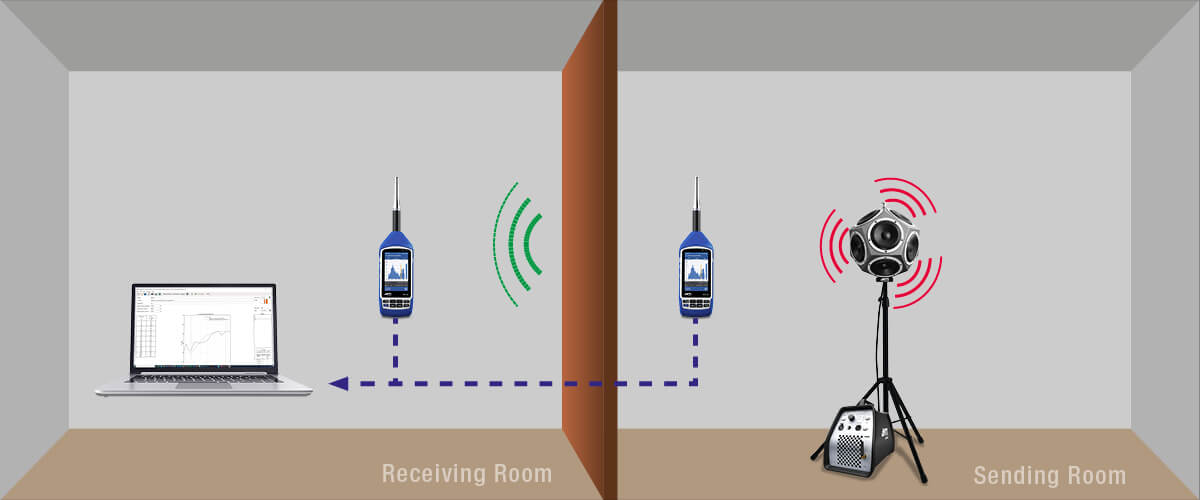Taking building acoustic measurements requires expert knowledge and experience. The well-trained specialist understands which tools are essential to the task, and how the tests should be set up in order to meet the various national standards. It is important that the results obtained are accurate and reliable, particularly if the measurements take place when the building is still a shell. It can also be advantageous when the measuring equipment is not heavy to carry, especially when the elevators are not yet in operation.
The Right Equipment

For a complete, standard-compliant measurement, an omnidirectional loudspeaker fills the sending room (L1) with sound energy, which is measured with 1/3rd octave resolution. At the same time, spectral sound pressure levels are measured with the same resolution in the receiving room (L2). In addition, the reverberation time in the receiving room, as well as the ambient sound level of the receiving room when it is quiet, must be measured in order to identify their potential influence on the sound insulation results. Depending on the standard applied and the room geometry, these measurements are performed with the microphone and loudspeaker located at several positions, and the results averaged.
Process Simplified with the Right Software
The Sound Insulation Reporter software is the ideal tool for your measurements. It offers several functions that help you to perform the complex workflows reliably and error-free. With pre-configuration, the software can automatically recognize, during data import, whether the measurements were taken in the transmitting or receiving room. These are displayed in different colors. This simplifies the averaging process considerably and allows you to quickly run through what-if scenarios on site.
For small rooms, the software also prompts you to perform appropriate corner correction measurements.
Parallel Measurements at the Push of a Button
Using the Sound Insulation Reporter software, several devices can be operated in parallel and the PA3 amplifier, providing the sound source for the omnidirectional DS3, can be addressed by the measurement sequence. All openings to and from the room must be tightly closed during a measurement. NTi Audio thus offers a flat ribbon cable that can be run, for example, under a door or through a closed window. Alternatively, you can establish a connection to the measurement device via a Wi-Fi network so that the control PC in the receiving room can remotely control all the devices involved.
(see App Note for Airborne Sound Insulation Measurement)